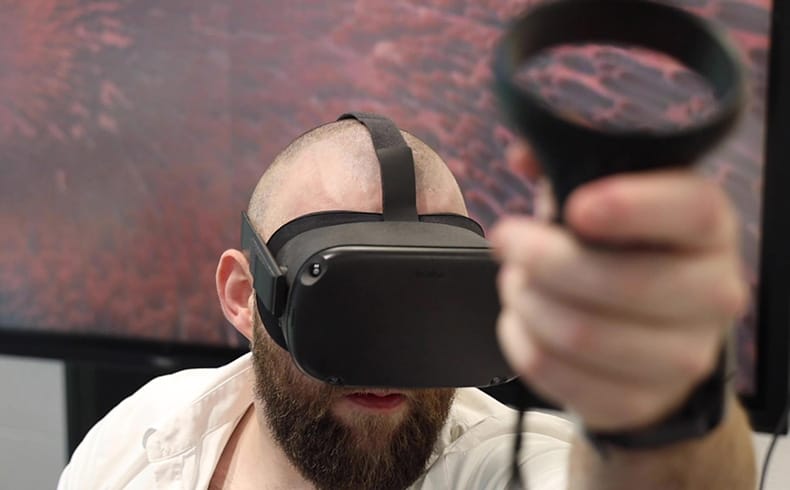Companies and individuals who need to run simulations or test prototypes now have access to a state-of-the-art, €160,000 mixed reality testbed lab and research team at SETU Waterford (formerly wit) West Campus.
Available for free to qualifying projects through the Technology Gateway, the lab is now open and accessible for companies and access to the Telecommunications Software and Systems Group (TSSG) campus will be in line with COVID-19 regulations.
The new facility allows clients see how mixed reality can transform education, training and awareness and monitor movement, immersion and interaction through a variety of technologies, including wireless headsets, a VR treadmill, 360-degree video capture, live performance and acoustic capture, physiological sensing and eye tracking equipment and so much more.
Funding for the landmark testbed facility was secured through the Enterprise Ireland Institutes of Technology Capital Call 2019 and although remote working has limited access to the equipment for the Augmented Reality/Virtual Reality (ARVR) team, Frances Cleary, Research Unit Manager in TSSG, said it’s now open and available for use:
“Mixed reality innovations need to be experienced by clients and interested stakeholders in order to fully understand and appreciate the potential it can bring to a company. The mixed reality innovation lab allows organisations to immerse themselves in virtual or augmented experiences providing the opportunity to develop an impactful research and development strategy for a particular product or service. This helps a company plan for a market impact at an earlier date, therefore increasing their chances of success of getting to the market in order to generate revenue.”
The Mixed Reality Innovation Lab at TSSG has a dedicated space located in Arclabs Research and Innovation Centre and also includes a portable element that can be brought to a client’s premises.
Kevin Doolin, Director of Innovation at TSSG said: “TSSG have been working in the Mixed Reality sector for a number of years and this lab allows the team to advance their research capabilities to showcase and enhance our developed applications and to support the visualisation and demonstration aspects of this technology to our industry partners in multiple sectors such as Health, Education and Pharma.”
Speaking about the importance of mixed reality technologies in industry, Miguel Ponce de Leon, TSSG Technology Gateway Manager said: “The applications of mixed reality technologies are endless. The nature of mixed reality lends itself well to a whole host of experiences as it offers a combination of movement, immersion and interaction. The experience and capabilities that it provides has many applications outside of its presumed entertainment value.
“We have seen an increase in mixed reality solutions being applied to industry since people are working remotely and the demand for online shopping has increased. Companies are using AR to allow their customers visualise a product in their home and others have applied VR to remote training programmes. We are very excited to see what the future holds for the mixed reality sector” he continued.
The Mixed Reality Innovation Lab provides four key components to industry:
- A dedicated multi-user Mixed reality (MR) environment utilising the latest in wireless transmitted desktop grade and all in one VR experiences, enterprise grade AR as well offering consumer level alternatives featuring depth and Lidar technologies. Local and remote GPU processing for digital photogrammetry, digital twin and high intensity AR/VR applications.
- A dedicated multi-user Augmented Reality (AR) environment with high-fidelity, full environment scanning (360-degree video capture, live performance capture, and acoustic capture), and visualisation capabilities.
- Human-centric monitoring to study the impact of AR and VR environments on an individual. This includes a high-precision EEG headset, haptic devices for physiological sensing and eye tracking equipment.
- Portable and mobile equipment that can extend the AR and VR environments beyond their dedicated lab spaces and push the current boundaries into multi-room and very large spaces, and outdoor spaces using a mix of traditional sensors, body sensors, visual odometry, drone-based 3D scanning and kinematic tracking.
Image: Ian Mills, Tech Lead, TSSG ARVR team
